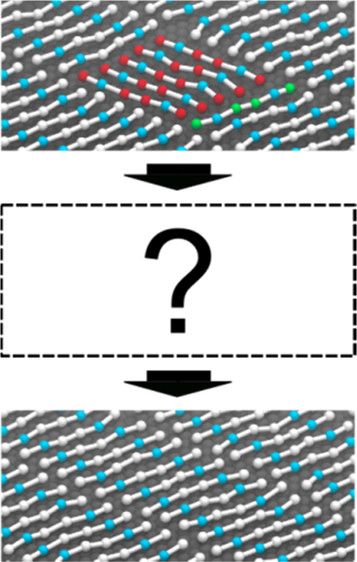Self-assembly of long functionalized alkanes on graphite
Published:
I have spent a large part of my Ph.D. working on self-assembly of long functionalized alkanes on graphite. Formation of such monolayer has potential as an alternative method for top-down approaches to create 2D structures (such as photolithography). In both papers, we show the complete process of self-assembly by coarse-grained molecular dynamics simulations: from molecules dissolved in phenooctane until highly-ordered assemblies. Our model not only explains in detail the process but also can be used to predict final supramolecular structures. If you are interested in more, you can read it in these papers:
T.K. Piskorz, C. Gobbo, S.J. Marrink, S. De Feyter, A.H. De Vries, J.H. van Esch. Nucleation Mechanisms of Self-Assembled Physisorbed Monolayers on Graphite. J. Phys. Chem. C, 2019, Just Accepted Manuscript. doi:10.1021/acs.jpcc.9b01234

In which we explain the self-assembly from adsorption of the adsorbent on graphite flake, through reorganization and to the formation of final stable assembly. However, such assembly can still have some defects, which can be healed in a long process of Ostwald ripening, which we describe in:
T.K. Piskorz, A.H. de Vries, S. De Feyter, J.H. van Esch, Mechanism of Ostwald Ripening in 2D Physisorbed Assemblies at Molecular Time and Length Scale by Molecular Dynamics Simulations, J. Phys. Chem. C,2018, 122, 42, 24380-24385, doi:10.1021/acs.jpcc.8b06432.

The simulations can be easily done, and you can find jupyter notebook explaining the process here.
